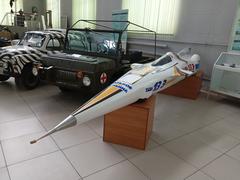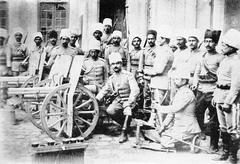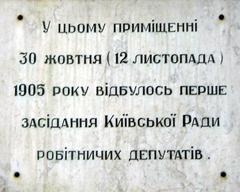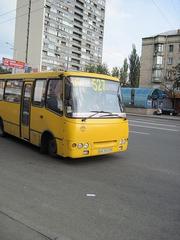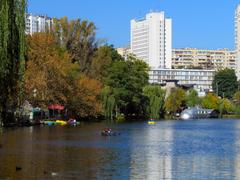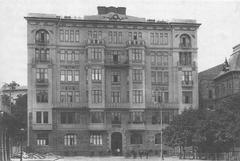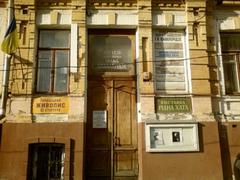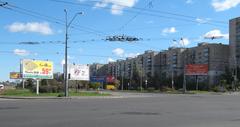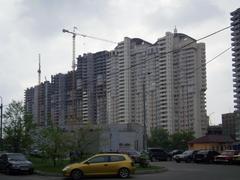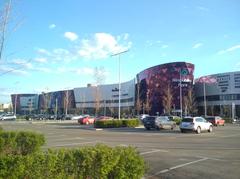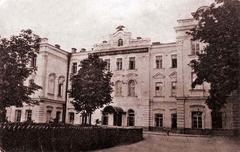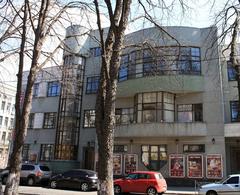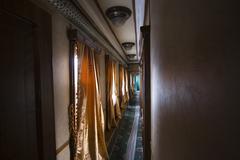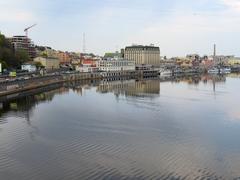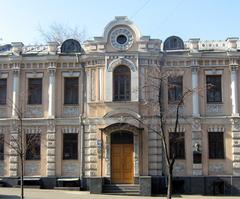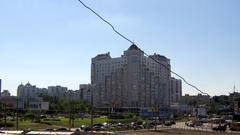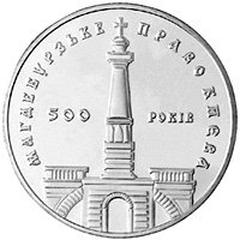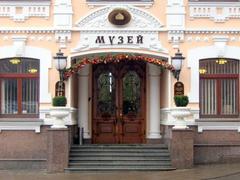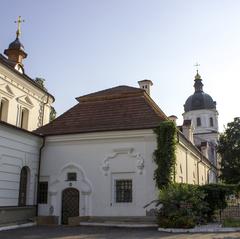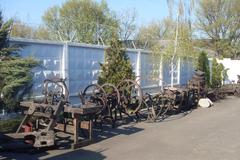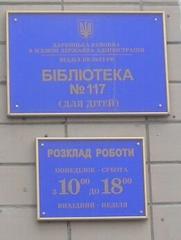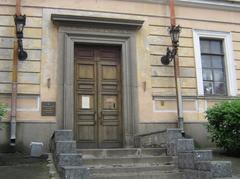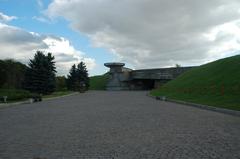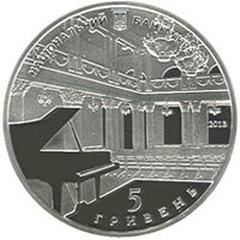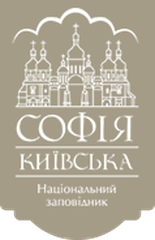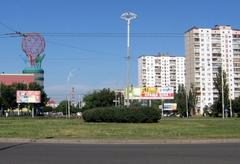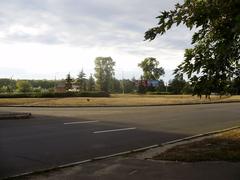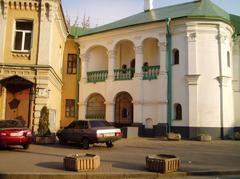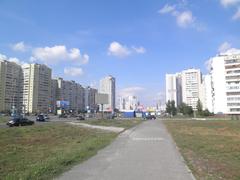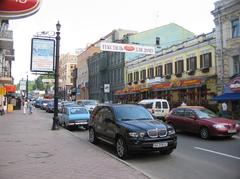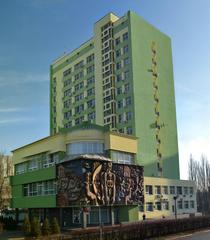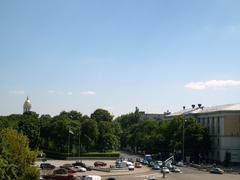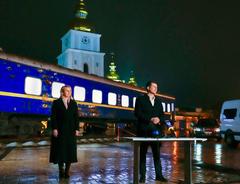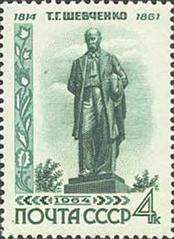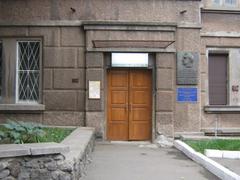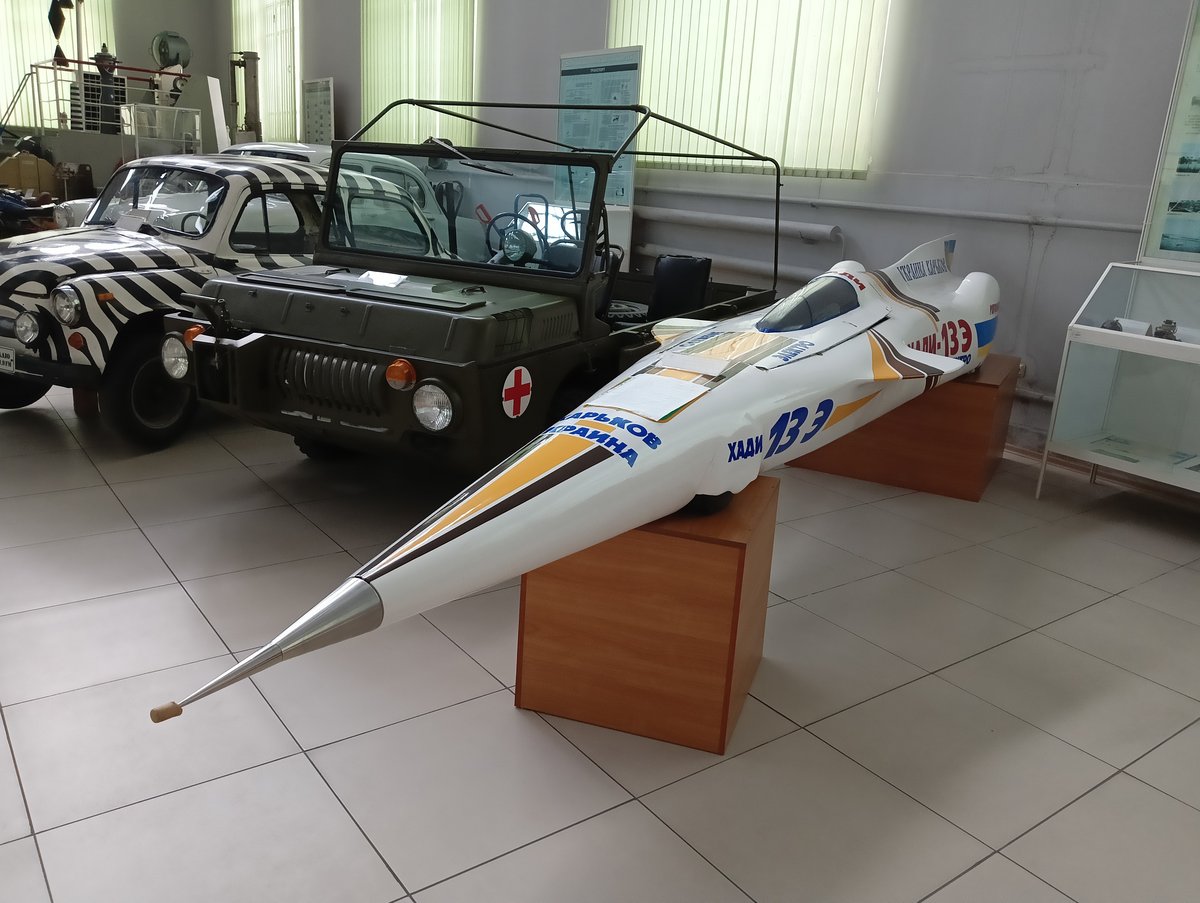
NTUU KPI State Polytechnic Museum Kyiv: Visiting Hours, Tickets, and Attractions Guide
Date: 14/06/2025
Introduction
The National Technical University of Ukraine “Igor Sikorsky Kyiv Polytechnic Institute” (NTUU KPI) stands as a cornerstone of Ukraine’s scientific and engineering legacy. Established in 1898, it has nurtured countless innovators, including aviation pioneer Igor Sikorsky and rocket engineer Sergey Korolev. Today, the State Polytechnic Museum Kyiv—housed within the university’s historic campus—offers visitors an immersive journey into the nation’s achievements in science, technology, and engineering. This detailed guide covers visiting hours, ticketing, accessibility, key attractions, and travel tips, ensuring you get the most out of your visit to this essential Kyiv historical site (NTUU KPI official site).
Historical Overview
NTUU KPI was founded at the turn of the 20th century, during a critical period of industrial growth in Ukraine. The university’s distinctive architecture, designed by Hieronim Kitner, and its expansion into more than 30 faculties, reflect its enduring impact on Ukrainian education. Throughout its history, the campus has been associated with significant technological advancements, including the establishment of one of Ukraine’s first aircraft plants in 1916. The State Polytechnic Museum—named after Borys Paton—was officially established in 1995 and opened to the public in 1998, in celebration of the university’s centenary (Tatarchuk, 2016).
Museum Significance and Thematic Structure
The State Polytechnic Museum is the largest university museum in Ukraine, dedicated to the history of science and technology. Its 14 thematic sections cover:
- Electronics and Instrument-Making
- Radio Engineering and Telecommunications
- Informatics and Computer Technology
- Minerals and Materials Science
- Industrial and Mechanical Engineering
- Aviation and Cosmonautics
With more than 10,000 artifacts and over 230 permanent exhibits, the museum chronicles Ukraine’s evolution from the late 19th century to the present. Noteworthy are models and prototypes of aircraft, computers, and radio equipment, along with a rich archive of historical documents and photographs (Tatarchuk, 2016).
Key Attractions and Notable Collections
Department of Aviation and Cosmonautics
A highlight of the museum, this department honors Igor Sikorsky and Ukraine’s contributions to aviation and space exploration. Exhibits include:
- Vostok Spacecraft Descent Module
- Operator Training Complex for Space Communications
- Models of Sikorsky’s Aircraft and Helicopters
- Personal memorabilia belonging to Sergey Korolev and other luminaries
The department hosts lectures, tours, and events featuring aerospace veterans—connecting past achievements with ongoing technological progress.
Historical Artifacts
- Early radios (1917), Soviet-era TVs, and computers such as the Luch and Neuron
- Personal items of notable alumni, including Sikorsky’s student slide rule and diplomas
- Extensive photographic archives of university life and scientific milestones
Educational Role and Community Engagement
The museum serves as a vital educational resource for NTUU KPI and the general public:
- Orientation for First-Year Students: All new students visit the museum to connect with the university’s heritage.
- Lectures and Workshops: The museum organizes STEM workshops, historical seminars, and technical tours for various age groups.
- Community Outreach: It partners with national and international institutions to promote scientific literacy and innovation (Tatarchuk, 2016).
Visitor Information
Location and Access
- Address: 37, Prospect Beresteiskyi (formerly Peremohy Avenue), Kyiv, Ukraine, 03056 (Museum location)
- Access: Located on the NTUU KPI campus, within walking distance of “Politekhnichnyi Instytut” metro station (Red Line). Multiple bus and trolleybus routes also serve the area.
Opening Hours
- Monday to Friday: 10:00 AM – 5:00 PM (some resources note up to 6:00 PM; verify before visiting)
- Saturday: 11:00 AM – 4:00 PM (check for special events)
- Sunday and Public Holidays: Closed
Always check the official website or museum site for the most current hours and any seasonal changes.
Tickets and Admission
- General Admission: 50 UAH
- Students and Seniors: 25 UAH (some exhibitions may offer free entry for university students and children under 12)
- Guided Tours: Available in Ukrainian; English or other languages by prior arrangement. Advance booking recommended for groups.
- Discounts: Available for school groups, pensioners, and during special events (Museum Tickets Page)
Accessibility
- Wheelchair Access: Main exhibition halls are accessible; some historic areas may have limited access.
- Assistance: Available upon request for visitors with special needs.
Visitor Experience
Guided Tours and Educational Programs
- Guided Tours: Enhance your visit with a tour tailored to your interests, available for all age groups.
- Workshops and Seminars: Participate in STEM workshops, historical lectures, and interactive sessions.
- Temporary Exhibitions: The museum regularly hosts rotating exhibitions on themes such as Kyiv’s winter holiday traditions or the anniversaries of famous alumni (Christmas trip to the museum).
Digital and Interactive Features
- Touchscreen Kiosks: Access digitized photos, blueprints, and documents.
- Virtual Tours: Experience the university’s history through immersive multimedia.
- Audio Guides: Available in multiple languages.
Practical Tips for Visitors
- Best Time to Visit: Weekday mornings for a quieter experience.
- Photography: Permitted for personal use without flash or tripods (verify restrictions on specific exhibits).
- Amenities: Restrooms, cloakroom, reading room, and a museum shop are available on site. Several cafes and snack bars are nearby.
- Parking: Limited on campus; public transportation is recommended.
- Duration: Allocate 1.5–2 hours for a comprehensive visit.
Photographic Spots and Unique Features
- Museum Entrance and Main Building: Iconic photo spots reflecting Kyiv’s architectural heritage.
- Sikorsky Aviation Exhibits: Popular for aviation and engineering enthusiasts.
- Campus Park and Knowledge Square: Ideal for scenic photography and relaxation.
Nearby Attractions
- Kyiv Central Railway Station
- Shevchenko Park
- National Opera House of Ukraine
- KPI Park and Knowledge Square: On-campus green spaces hosting events and festivals
Safety, Security, and Language Support
The NTUU KPI campus is safe and well-monitored, with emergency infrastructure (“points of invincibility”) in place. Most signage is in Ukrainian, but key exhibits and guided tours are available in English by request.
Frequently Asked Questions (FAQ)
Q: Are tickets required for entry?
A: The campus is open to the public, but museum entry requires a ticket.
Q: Are guided tours available in English?
A: Yes, with advance booking.
Q: Is the museum wheelchair accessible?
A: Most public areas are accessible; some historic corridors may not be.
Q: Can I take photos?
A: Yes, for personal use. Flash and tripods may be restricted.
Q: Where can I buy tickets?
A: At the museum entrance or online (Museum Tickets Page).
Final Tips
- Check for special exhibitions and events before your visit.
- Plan your route via public transport for convenience.
- Engage with guides and staff for a richer experience.
- Respect the historic environment and museum etiquette.
Conclusion
The NTUU KPI State Polytechnic Museum is a dynamic institution celebrating Ukraine’s scientific and technological legacy. Its extensive collections, interactive exhibits, and educational outreach make it a must-visit for students, tourists, and anyone passionate about engineering and history. For the latest updates and to plan your visit, use the official museum website, download the Audiala app, and follow the museum on social media (State Polytechnic Museum Kyiv, NTUU KPI official site, Research on Museum History, NTUU KPI Polytechnic Museum Visitor Guide).
References
- NTUU KPI official site
- State Polytechnic Museum Kyiv
- Research on Museum History (Tatarchuk, 2016)
- NTUU KPI Polytechnic Museum Visitor Guide
